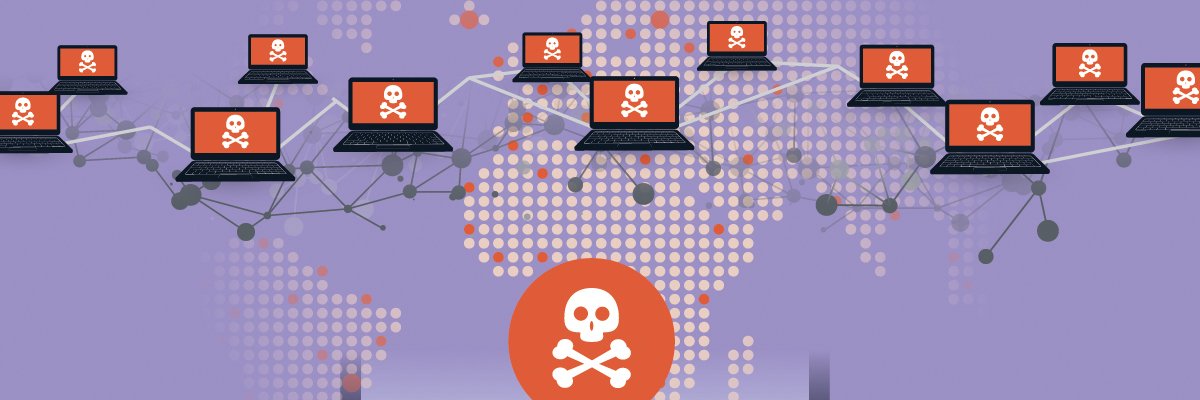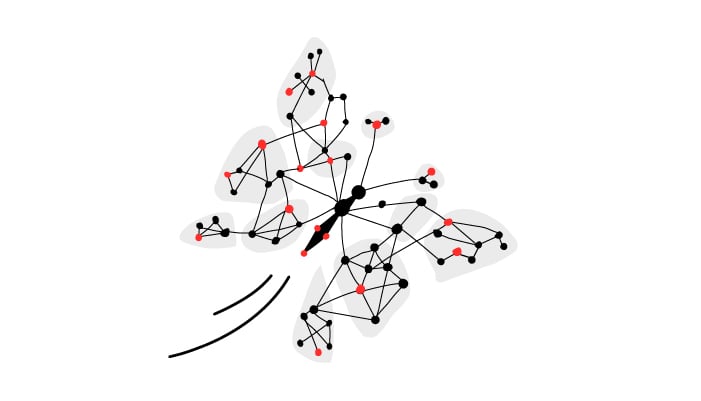How the Web3 stack will automate the enterprise

Web3 is only partially in existence within enterprises but is already making an
incredible impact and altering strategies. Cross River Bank, which just raised
$620 million at a $3 billion valuation, powers embedded payments, cards,
lending, and crypto solutions for over 80 leading technology partners. Cross
River CEO Giles Gade’s plan is to start offering more crypto-related products
and services, gearing towards a crypto-first strategy. Investors are excited by
the opportunity. “As Web3 continues to gain mindshare of consumers and
businesses alike, we believe Cross River sits in a unique position to serve as
the infrastructure and interconnective tissue between the traditional and
regulated centralized financial system, as it transitions slowly to a
decentralized one,” said Lior Prosor, General Partner and Co-founder of Hanaco
Ventures in the Cross River press release. In many ways, this time is no
different than when financial institutions and VCs saw the disruptive potential
by investing in FinTech innovation – analog to digital – years prior. If FinTech
is the blending of technology and finance, Web3 is the merging of crypto with
the web.
Demystifying the Metrics Store and Semantic Layer
First, many critical data assets end up isolated on local servers, data centers
and cloud services. Unifying them poses a significant challenge. Often, there
are also no standardized data and business definitions, and this adds to the
difficulty for businesses to tap into the full value of their data. As companies
embark on new data management projects, they need to address these concerns;
however, many have chosen to avoid this issue for one reason or another. This
results in new data silos across the business. Second, as every data warehouse
practitioner is aware, it’s difficult for most business users to interpret the
data in the warehouse. Because technical metadata like table names, column names
and data types are typically worthless to business users, data warehouses aren’t
enough when it comes to allowing users to conduct analysis on their own. From a
business user’s perspective, what can be done to solve this problem? Two popular
solutions are metrics stores and semantic layers, but which is the best
approach? And what’s the difference between them?
Why HR plays an important role in preventing cyber attacks

HR staff members often work with legal counsel on security policies, including
the creation, maintenance and enforcement of acceptable usage policies. Since HR
staff communicates frequently with employees, they are well positioned to share
information about security and privacy expectations and often already work to
keep security topics top-of-mind for employees. ... As with security policy
work, HR professionals are often a valuable part of compliance-related
initiatives because certain aspects of state, federal and international privacy
and security compliance regulations require HR expertise. This is particularly
true for larger organizations that have office locations or employees in
multiple countries. HR may work on the creation of processes including user
onboarding and offboarding, security awareness and training, and the steps for
incident response once a crisis occurs. ... Some HR professionals already serve
on their IT and security governance committee, as it's only natural that HR
should help get the word out on security and assist with policy creation and
administration when needed.
7 Reasons Why Serverless Encourages Useful Engineering Practices
They are easier to change. After reading the book “The Pragmatic Programmer”, I
realized that making your software easy to change is THE de-facto principle to
live by as an IT professional. For instance, when you leverage functional
programming with pure (ideally idempotent) functions, you always know what to
expect as input and output. Thus, modifying your code is simple. If written
properly, serverless functions encourage code that is easy to change and
stateless. They are easier to deploy — if the changes you made to an individual
service don’t affect other components, redeploying a single function or
container should not disrupt other parts of your architecture. This is one
reason why many decide to split their Git repositories from a “monorepo” to one
repository per service. With serverless, you are literally forced to make your
components small. For instance, you cannot run any long-running processes with
AWS Lambda (at least for now). At the time of writing, the maximum timeout
configuration doesn’t allow for any process that takes longer than 15
minutes.
WTF is a Service Mesh?

The internal workings of a Service Mesh are conceptually fairly simple: every
microservice is accompanied by its own local HTTP proxy. These proxies perform
all the advanced functions that define a Service Mesh (think about the kind of
features offered by a reverse proxy or API Gateway). However, with a Service
Mesh this is distributed between the microservices—in their individual
proxies—rather than being centralised. In a Kubernetes environment these proxies
can be automatically injected into Pods, and can transparently intercept all of
the microservices’ traffic; no changes to the applications or their Deployment
YAMLs (in the Kubernetes sense of the term) are needed. These proxies, running
alongside the application code, are called sidecars. These proxies form the data
plane of the Service Mesh, the layer through which the data—the HTTP requests
and responses—flow. This is only half of the puzzle though: for these proxies to
do what we want they all need complex and individual configuration. Hence a
Service Mesh has a second part, a control plane.
Best Practices for Deploying Language Models
We’re recommending several key principles to help providers of large language
models (LLMs) mitigate the risks of this technology in order to achieve its full
promise to augment human capabilities. While these principles were developed
specifically based on our experience with providing LLMs through an API, we hope
they will be useful regardless of release strategy (such as open-sourcing or use
within a company). We expect these recommendations to change significantly over
time because the commercial uses of LLMs and accompanying safety considerations
are new and evolving. We are actively learning about and addressing LLM
limitations and avenues for misuse, and will update these principles and
practices in collaboration with the broader community over time. We’re sharing
these principles in hopes that other LLM providers may learn from and adopt
them, and to advance public discussion on LLM development and deployment.
A cybersecurity expert explains why it would be so hard to obscure phone data in a post-Roe world

There’s not a whole lot users can do to protect themselves. Communications
metadata and device telemetry – information from the phone sensors – are used to
send, deliver and display content. Not including them is usually not possible.
And unlike the search terms or map locations you consciously provide, metadata
and telemetry are sent without you even seeing it. Providing consent isn’t
plausible. There’s too much of this data, and it’s too complicated to decide
each case. Each application you use – video, chat, web surfing, email – uses
metadata and telemetry differently. Providing truly informed consent that you
know what information you’re providing and for what use is effectively
impossible. If you use your mobile phone for anything other than a paperweight,
your visit to the cannabis dispensary and your personality – how extroverted you
are or whether you’re likely to be on the outs with family since the 2016
election – can be learned from metadata and telemetry and shared.
Three Architectures That Could Power The Robotic Age With Autonomous Machine Computing
Similar to other information technology stacks, the autonomous machine computing
technology stack consists of hardware, systems software and application
software. Sitting in the middle of this technology stack is computer
architecture, which defines the core abstraction between hardware and software.
The existence of this abstraction layer allows software developers to focus on
optimizing the software to fully utilize the underlying hardware to develop
better applications as well as to achieve higher performance and higher energy
efficiency. This abstraction layer also allows hardware developers to focus on
developing faster, more affordable, more energy-efficient hardware that can
unlock the imagination of software developers. ... Hence, computer architecture
is essential to information technology. For instance, in the personal computing
era, x86 has become the dominant computer architecture due to its superior
performance. In the mobile computing era, ARM has become the dominant computer
architecture due to its superior energy efficiency.
Datadog finds serverless computing is going mainstream

Serverless represents the ideal state of cloud computing, where you only use
exactly what resources you need and no more. That’s because the cloud provider
delivers only those resources when a specific event happens and shuts it down
when the event is over. It’s not a lack of servers, so much as not having to
deploy the servers because the provider handles that for you in an automated
fashion. When people began talking about cloud computing around 2008, one of the
advantages was elastic computing, or only using what you need, scaling up or
down as necessary. In reality, developers don’t know what they’ll need, so
they’ll often overprovision to make sure the application stays up and running.
The company created the report based on data running through its monitoring
service. While it represents only the activity from its customers, Rabinovitch
sees it as quality data given the broad range of customers it has using its
services. “We do think we’re well represented across the industry, and we
believe that we’re representative of real production workloads,” he said.
How Platform Engineering Helps Manage Innovation Responsibly

Platform engineering, then, is a support function. If it enables, it does so by
reducing complexity and making it easier for developers and other technical
teams to achieve their objectives. Moreover, one of the advantages of having a
platform engineering team is that it can balance competing needs and aims —
like, for example, developer experience and security — in a way that ensures
engineering capabilities and commercial imperatives are properly aligned.
Calling it a “support function” might not sound particularly sexy, but it
nevertheless suggests that organizations are maturing in their approach to
software development. It’s no longer the locus of moving fast and breaking
things, but instead recognized as something that requires care and stewardship.
But this implies responsibility — and that, to invert the old adage, carries
considerable power. This means that platform engineering can become a political
beast within organizations. If it can shape the way developers work, it can
inevitably play a part in the direction of a whole technology strategy.
Quote for the day:
"Leadership is developed daily, not in a
day." -- John C. Maxwell
No comments:
Post a Comment